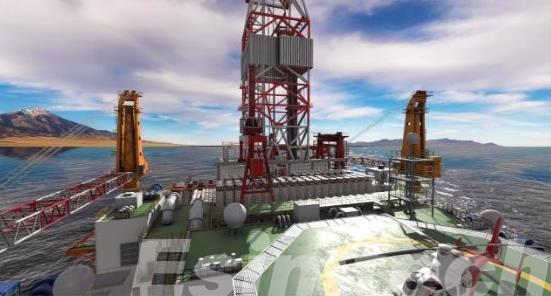What are Drillships: Why Simulation Technology is Important for Their Operation
الجسم
In the realm of offshore exploration and resource extraction,drillships have emerged as cutting-edge vessels, amalgamating advanced technology, engineering prowess, and simulation capabilities to tackle the complexities of offshore drilling. These adaptable vessels represent a pinnacle of human innovation, granting access to valuable reserves beneath the ocean's depths. This article delves into the captivating universe of drillships, unraveling their extraordinary attributes and highlighting the pivotal role that simulation technology plays in their operational achievements.

The Genesis of Drillships
Drillships stand as meticulously crafted maritime vessels designed to delve into the seabed for the extraction of oil and gas reservoirs. These remarkable entities combine the characteristics of both ships and oil rigs, featuring advanced drilling apparatus, living accommodations for crew members, and state-of-the-art technology that grants them autonomous functionality even in remote and challenging landscapes.
The concept of drillships emerged as the imperative to explore and exploit resources from increasingly profound waters gained prominence. In contrast to conventional fixed oil rigs rooted to the ocean bed, drillships offer the agility to relocate to diverse locales, aligning adeptly with the ever-shifting demands of exploration. This mobility provides drillships access to previously inaccessible regions, unveiling untapped reserves concealed beneath the ocean's expanse.
Anatomy of a Drillship
A drillship is a specialized offshore drilling rig crafted for deep-sea exploration and extraction of oil and gas resources from beneath the ocean floor. Its key components include:
Hull and Structure:
Hull: Double-hulled for added safety, designed to withstand harsh marine conditions.
Mooring System: Equipped with anchors and chains or dynamic positioning (DP) system for precise positioning.
Drilling Equipment:
Derrick: Vertical structure supporting the drill string and drilling equipment.
Drillstring: Connects the drill bit to the surface equipment, allowing power and rotation transfer.
Top Drive: Motorized device providing rotational force for efficient drilling.
Blowout Preventer (BOP): Critical safety device on the seafloor to control well pressure.
Living Quarters and Facilities:
Accommodation: Living quarters for the crew.
Mess Rooms and Recreation Areas: Facilities for meals, relaxation, and recreation.
Control Rooms: Houses equipment for monitoring and controlling operations.
Power and Propulsion:
Engines and Generators: Provide electrical power for all onboard systems.
Thrusters: Enable precise maneuvering and positioning in dynamic environments.
Helipad: Facilitates crew changes, supply deliveries, and emergency evacuations.
The Role of Simulation in Drillships
The operation of a drillship involves complex tasks demanding accuracy, precision, and adherence to safety protocols. Drilling simulation technology serves as a guiding beacon, replicating real-world scenarios in a controlled environment. Its purposes include:

Crew Training:
Allows crew members to practice tasks and emergency responses in a safe environment.
Navigational Excellence:
Enables navigation officers to practice positioning the vessel accurately under various conditions.
Drilling Procedures:
Assists drill operators in practicing drilling procedures to optimize efficiency and reduce accidents.
Emergency Preparedness:
Facilitates emergency drills for swift and effective responses to various scenarios.
Advanced Simulations
Contemporary simulation technology offers high-fidelity, lifelike experiences, integrating dynamic variables like weather patterns and equipment reactions. As technology advances, the potential of drillship simulators will progress, incorporating artificial intelligence and machine learning for adaptable scenarios.
In Conclusion
The drillship stands as a testament to human inventiveness, exploring new horizons by tapping into resources beneath the ocean floor. Its transformative feat is achieved through the fusion of leading-edge technology, inventive thinking, and simulation prowess. As drillships navigate the challenging waters of resource extraction, simulation technology will remain a steadfast companion, equipping crews, refining operations, and pushing the boundaries of achievement. Through the drillship, we witness the potency of human potential heightened by the tools of the digital era, propelling us deeper into the uncharted recesses of discovery.










تعليقات